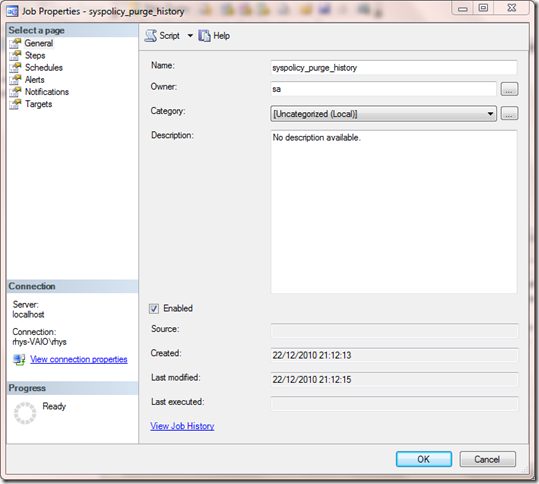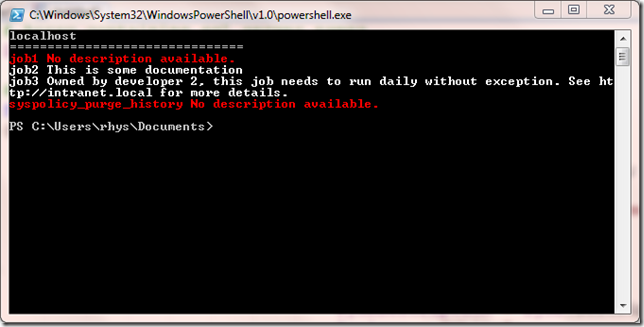Document your SQL Agent Jobs
And I don’t mean writing it down in a word document, leaving it somewhere on the network, and then forgetting about it. How about keeping the documentation with the job? Microsoft provides us with a space for it…
In this description field ideally I’d like to see
- A brief description of what the job does.
- Who owns the job. Who can I bother if there’s something I don’t get?
- How critical is this job? Can it wait until you’re back from holiday next week or does it have to be fixed as soon as feasible?
- Links to further documentation. I don’t expect an essay in here so include detailed documentation elsewhere and provide links if needed.
This little bit of Powershell will check SQL Agent jobs on multiple servers for a description. Any jobs without a description will be highlighted in red.
[System.Reflection.Assembly]::LoadWithPartialName("Microsoft.SqlServer.Smo") | Out-Null;
# Array containing sql server names
$servers = @("localhost");
# Process each sql server
foreach($server in $servers)
{
Write-Host "$server ";
Write-Host "===============================";
# Create a SMO server object
$srv = New-Object Microsoft.SqlServer.Management.SMO.Server $server;
$jobs = $srv.JobServer.Jobs;
foreach($job in $jobs)
{
$jobName = $job.Name;
$jobDescription = $job.Description;
$colour = "White";
# If job is not documented highligh in red
if($jobDescription -eq "No description available.")
{
$colour = "Red";
}
Write-Host -ForegroundColor $colour $jobName $JobDescription;
}
Write-Host "";
}
So get documenting those jobs and you might be left in peace on your next holiday!
If you liked this you might also like;
Documenting Databases with Powershell

